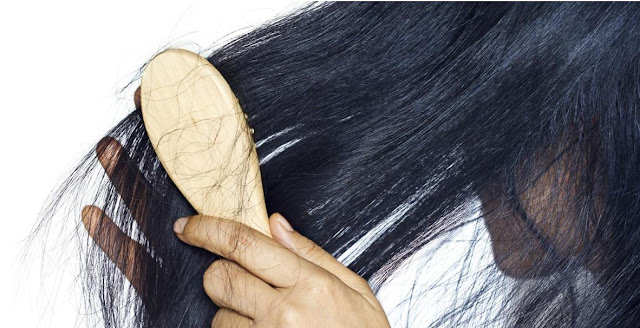Hair loss in women is still poorly known. Dermatologist Nina Roos answers the most common questions about female alopecia.
Hair loss in women is an unknown subject, even taboo. Yet, almost a quarter of the female population suffers from it, in a temporary or chronic way. To find out more about alopecia, its causes and the ways to treat or prevent it, Dr. Nina Roos, a dermatologist in Paris and author of the book Skin in Top form at Solar, answers the questions that we arises on this affection capillary unknown but which raises many concerns among those who suffer.
When to worry?
"First of all, you need to know that hair loss, or alopecia, is a frequent reason for dermatological consultation, especially at the time of seasonal changes and at the beginning of autumn," explains dermatologist Nina Roos. She adds: "As soon as we notice a sudden change in the frequency of the fall or in the amount of hair lost, it is normal to feel a little frantic, and go see is a first step to understand this change. The doctor states that, medically speaking, alopecia is more than 100 hair lost per day in a lasting way for 3 months, but, she says: "it is difficult to gauge what this represents. A fall that worries is not insignificant, so do not hesitate to take things in hand. A dermatologist will be able to draw up a balance sheet and determine whether there is a need for treatment. "
What is the difference between transient and chronic fall?
For Nina Roos, "the problem, if it is temporary, is characterized by a sudden acceleration of the hair loss, sensitive or visible, related to a change or a disturbance in his daily life. Chronic alopecia, meanwhile, is characterized by a duration greater than 6 months of severe daily fall, sometimes undergoing variations in intensity. It requires medical care that will prescribe injections of vitamins or hormone treatment depending on the case, which however do not always restore the hair mass in its entirety. It is a fundamental problem, over time, which can have variations in intensity over time, and remains less common than the temporary fall of hair. "
What are the causes ?
Several causes are for the dermatologist: "At first and as already mentioned, the change of season remains one of the main reasons for hair loss, especially in the fall. Then, a great stress or an event like a childbirth or a general anesthesia can also cause a notorious capillary loss, often transient. Hormonal disorders or dietary deficiencies can sometimes be incriminated; a diet too low in iron and vitamins B or taking a poorly adapted oral contraceptive then become quite probable causes. Finally, the tobacco, if it is not necessarily the triggering factor, aggravates the fall when it declares itself ". Nina Roos specifies however: "It is necessary to verify that other symptoms do not appear at the same time as alopecia: a hyperpilosity, acne, irregular rules taking source at the same moment can be the syndromes of a hyper -androgyny, a very different hormonal disorder. Hence the importance of consulting whenever there is a worrying loss in quantity, at the risk of playing alarmist. "
How to counter it?
The first prescriptions of the dermatologist are simple enough to put in place: "At first, we try to rebalance his diet by incorporating iron-rich foods including red meat and legumes (watered with a little lemon juice for better absorption of iron in the body), as well as foods rich in B vitamins (eggs, yeasts ...) and sulfur amino acids (seafood in particular). To avoid the inconvenience associated with smoking, the ideal is also to stop smoking. Then, you have to go back to sport - if only for a brisk walk 30 minutes three times a week to be able to irrigate and re-oxygenate the scalp and thus promote growth and therefore hair renewal. After these fundamental changes in lifestyle, we can consider, in the context of a temporary hair loss, to invest in food supplements and specialized care: "for a more serious phenomenon, the care of the trade can be inefficient. We will then favor a dermatological follow-up. In any case, and if the sensitivity of the scalp allows, we take the time under the shower to rub the scalp to stimulate microcirculation and thus allow a better chance of regrowth. "




















Aucun commentaire:
Enregistrer un commentaire